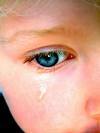Child Abuse...
--------------------------------------------------------------------------------
--------------------------------------------------------------------------------
Following are some signs of possible child abuse provided by the Nebraska Department of Health and Human Services.
--------------------------------------------------------------------------------
Identifying Physical Abuse
Signs/Symptoms may include:
- Unexplained bruises, burns or welts made by something recognizable like a belt buckle, cigar, cigarette, etc..., on the hands, face, lips, torso, thighs and/or back.
- Unexplained rope burns on arms, legs, neck and/or torso.
- Many bruises in various stages of healing.
- Unexplained fractures of the skull, nose and/or facial bones.
- Unexplained lacerations or abrasions on the mouth, lips, gums and/or eyes.
- Alcohol and/or drug abuse.
Behavioral Indicators may include:
- Apprehensive of adult contacts
- Extreme aggressiveness or withdrawal; antisocial or destructive conduct.
- Fear of going home.
- Thumb sucking, lip biting or rocking.
- Hysteria, obsessions, compulsions, phobias or hypochondria, suicide threats or attempts.
Identifying Neglect
Signs/Symptoms may include:
- Reporting of no caretaker present.
- Consistent hunger.
- Poor hygiene
- Inappropriate dress
- Unattended physical problems or medical needs including dental needs.
- Alcohol or drug abuse.
- Begging for or stealing food.
- Early arrivals and late departures from school.
- Constant fatigue or listlessness.
- Chronic delinquency, thefts.
Elder Abuse
The following information is obtained from the Nebraska Department of Health and Human Services.
--------------------------------------------------------------------------------
Elder abuse is one of the fastest growing types of domestic violence. Elder abuse is harm done to persons over the age of 65 by a person in a position of trust, by doing or not doing something.
Elders often do not report abuse because of fear--fear of a backlash from the abuser, fear of losing contact with family members, fear of departing the family home to a nursing facility. Elders are also often unaware that law enforcement can intervene to help protect them.
FAN seeks to decrease the instance of elder abuse.
Domestic Violence
The following information is from Victim to Survivor: A Handbook for Battered Women, by Leslie Cantrell.
--------------------------------------------------------------------------------
Domestic violence is not an isolated event, but a pattern of behaviors used by a partner in a present or past relationship. There are many types of abuse that may be used against a partner including emotional, verbal, physical and/or sexual abuse. Children are also impacted by this violence and may suffer for many years as a result. While there are conflicts in every relationship, no one deserves or asks to be abused.
Sexual assault can happen to women and men of every age, shape, race and social class. After the initial trauma of sexual assault, a person may experience feelings of fear, guilt, embarrassment and helplessness. Counseling can support the person through these feelings and ease their return to daily life.
Being physically or emotionally abused by a spouse/partner is a frightening and lonely experience. You may feel that you are the only person that this is happening to. In reality, millions of women in the United States experience battering every year. Statistics indicate that a woman is battered every 18 seconds and one in every two women will be the victim of a violent encounter with her mate at some point in her life. Knowing that you are not the only one experiencing battering in an intimate relationship can help to free you from the shame and embarrassment you may be feeling and help you understand that the abuse does not occur because you are doing something "wrong" or that you do something to cause it to happen.



